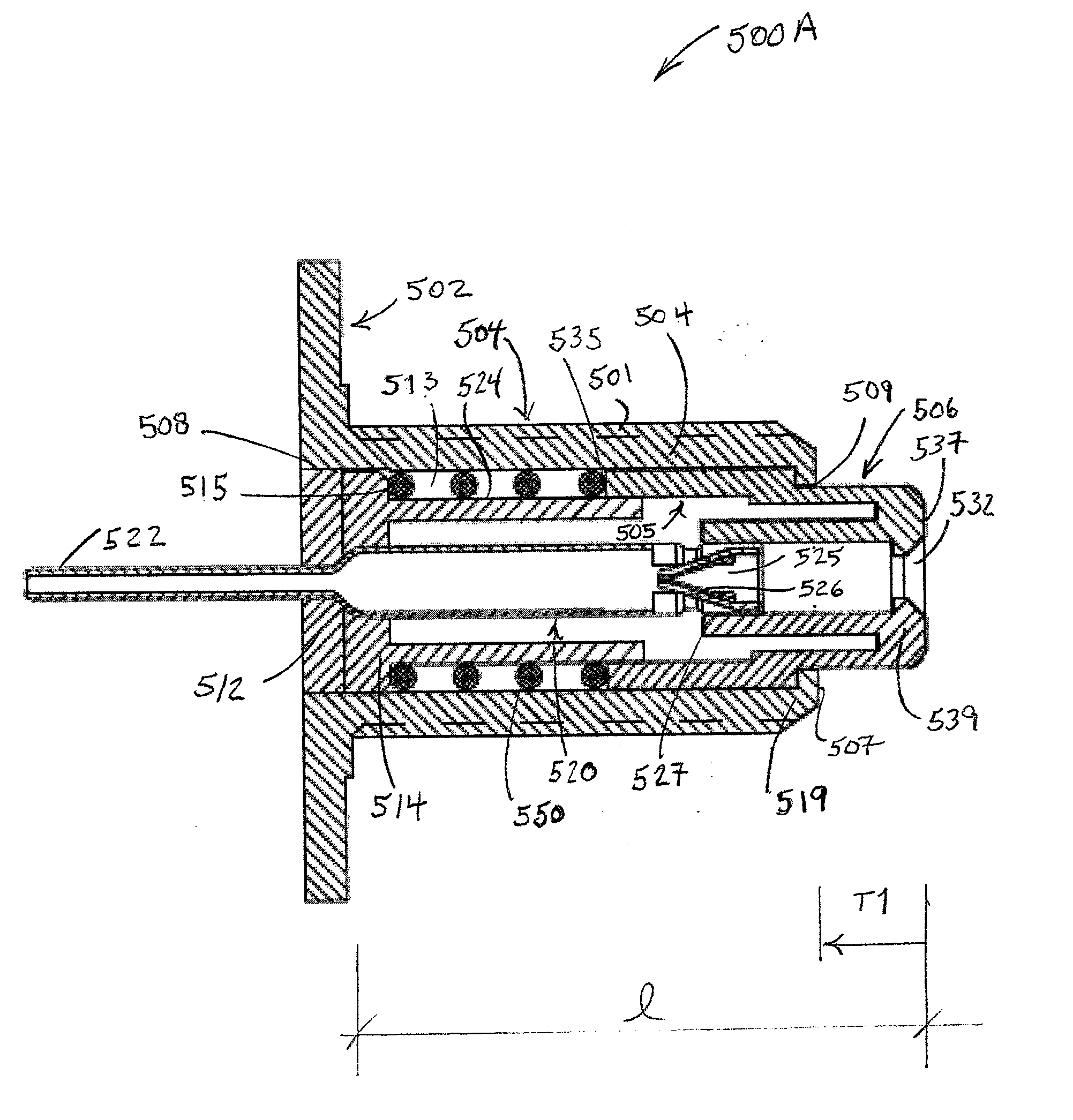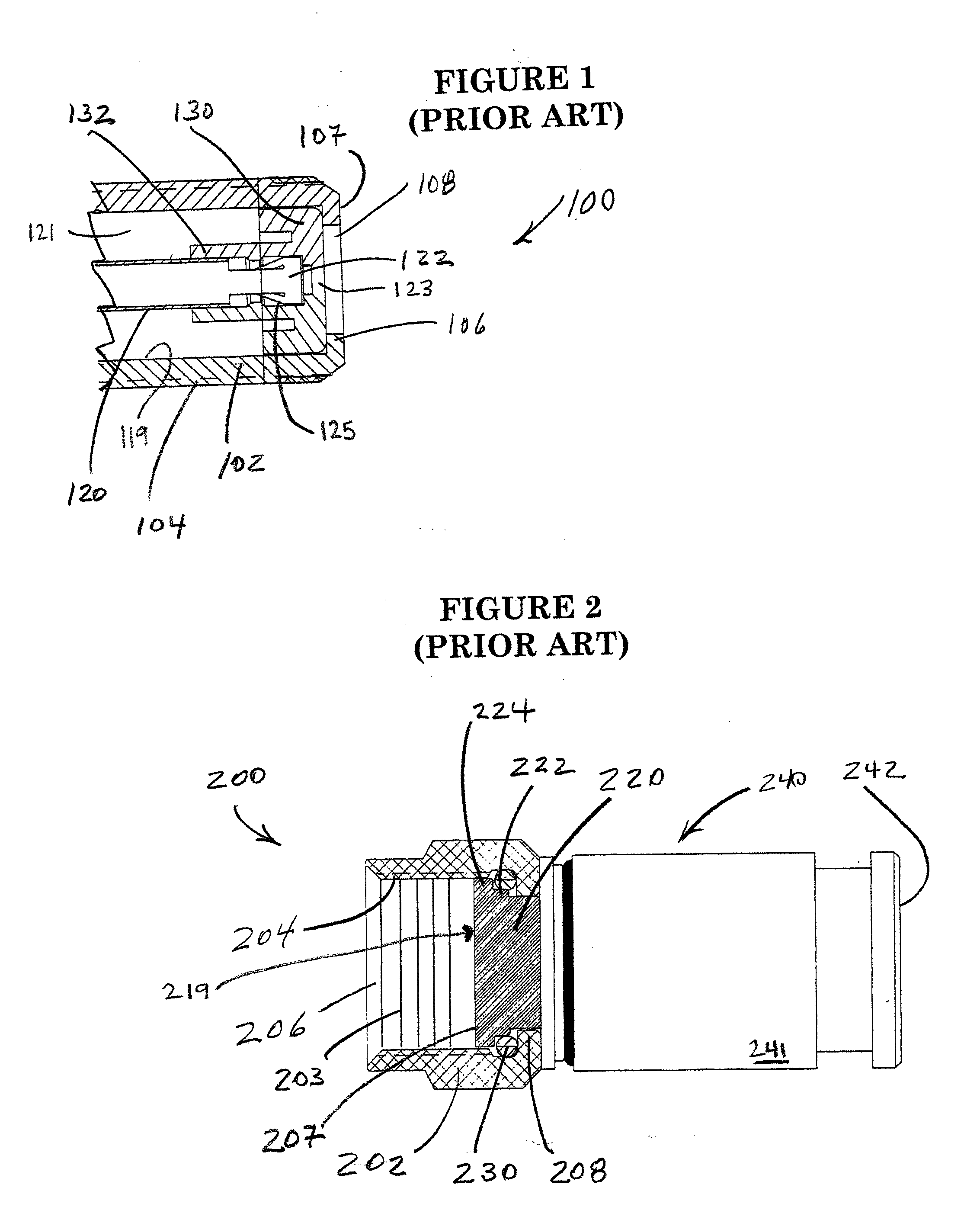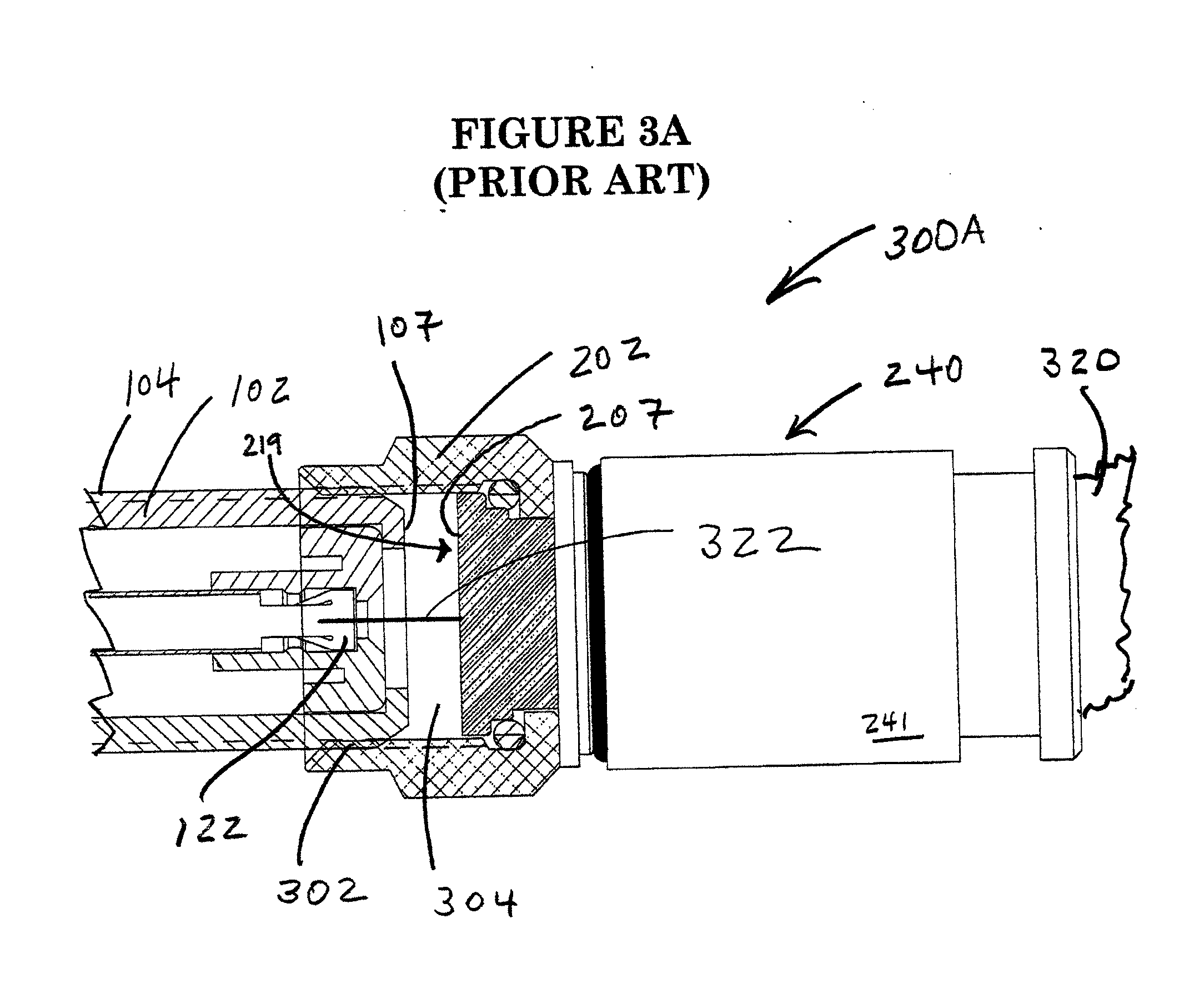Moving part coaxial cable connectors
a coaxial cable and moving part technology, applied in the field of coaxial cable connectors, can solve the problems of poor signal transport through mated connectors, ingress into mated or open connectors, and potential problems of signal emission from mated or open connectors, and achieve the effect of improving electrical continuity
- Summary
- Abstract
- Description
- Claims
- Application Information
AI Technical Summary
Benefits of technology
Problems solved by technology
Method used
Image
Examples
Embodiment Construction
[0044]The disclosure provided in the following pages describes examples of some embodiments of the invention. The designs, figures, and descriptions are non-limiting examples of certain embodiments of the invention. For example, other embodiments of the disclosed device may or may not include the features described herein. Moreover, disclosed advantages and benefits may apply to only certain embodiments of the invention and should not be used to limit the disclosed inventions.
[0045]FIG. 1 shows a prior art female portion of an F coaxial cable connector (“F connector”) 100. This connector portion includes a connector body 102, a conductive pin 120 with a pin mouth 122, and a pin mouth insulator 130 for locating the pin mouth 122 about centrally in a connector body cavity 121
[0046]The body cavity 121 has a body inside wall 119 that encircles the insulator 130. In various embodiments the insulator is retained within the cavity by a female end rim 106 that presents a female end-face 107...
PUM
| Property | Measurement | Unit |
|---|---|---|
| frequencies | aaaaa | aaaaa |
| external forces | aaaaa | aaaaa |
| conductive | aaaaa | aaaaa |
Abstract
Description
Claims
Application Information
 Login to View More
Login to View More - R&D
- Intellectual Property
- Life Sciences
- Materials
- Tech Scout
- Unparalleled Data Quality
- Higher Quality Content
- 60% Fewer Hallucinations
Browse by: Latest US Patents, China's latest patents, Technical Efficacy Thesaurus, Application Domain, Technology Topic, Popular Technical Reports.
© 2025 PatSnap. All rights reserved.Legal|Privacy policy|Modern Slavery Act Transparency Statement|Sitemap|About US| Contact US: help@patsnap.com



